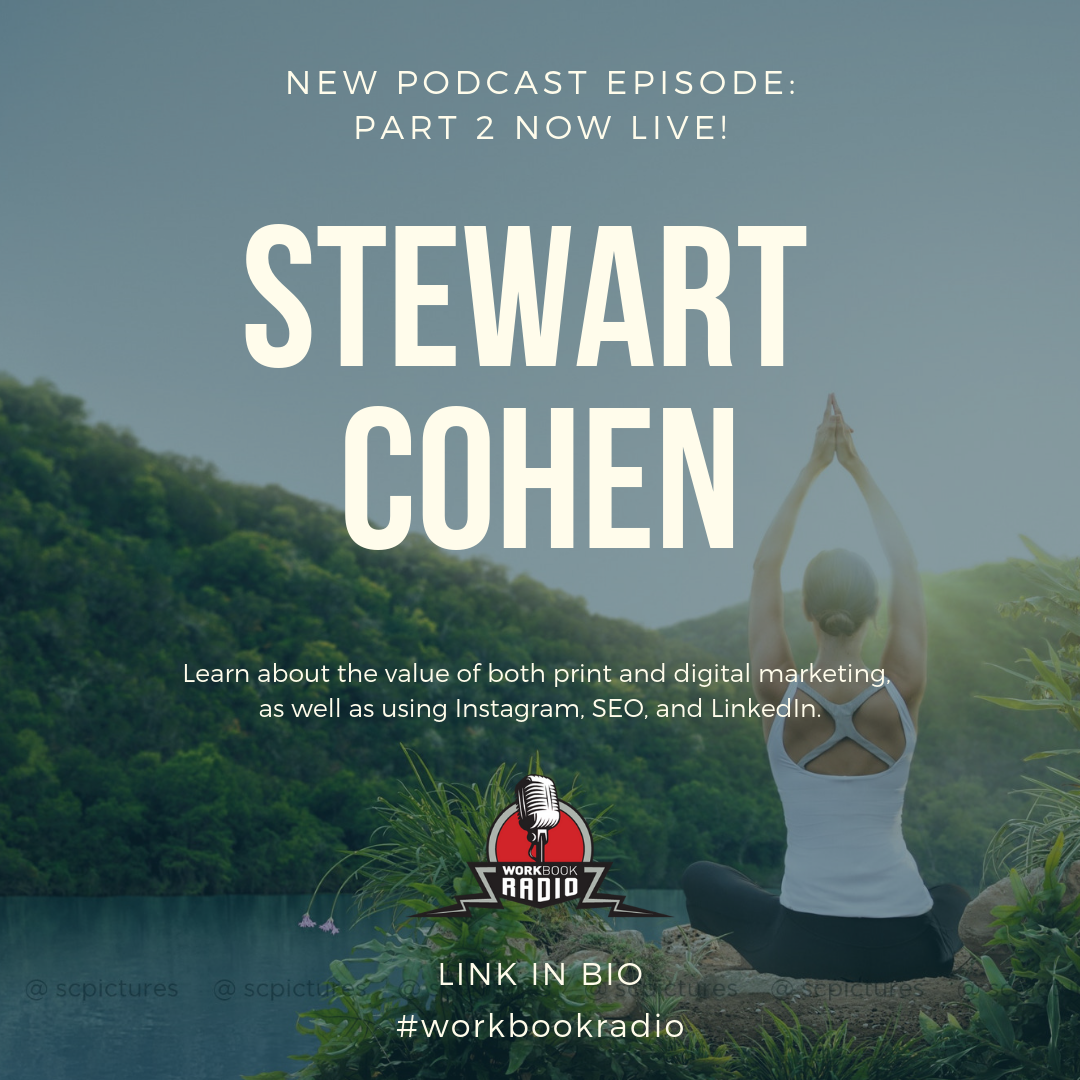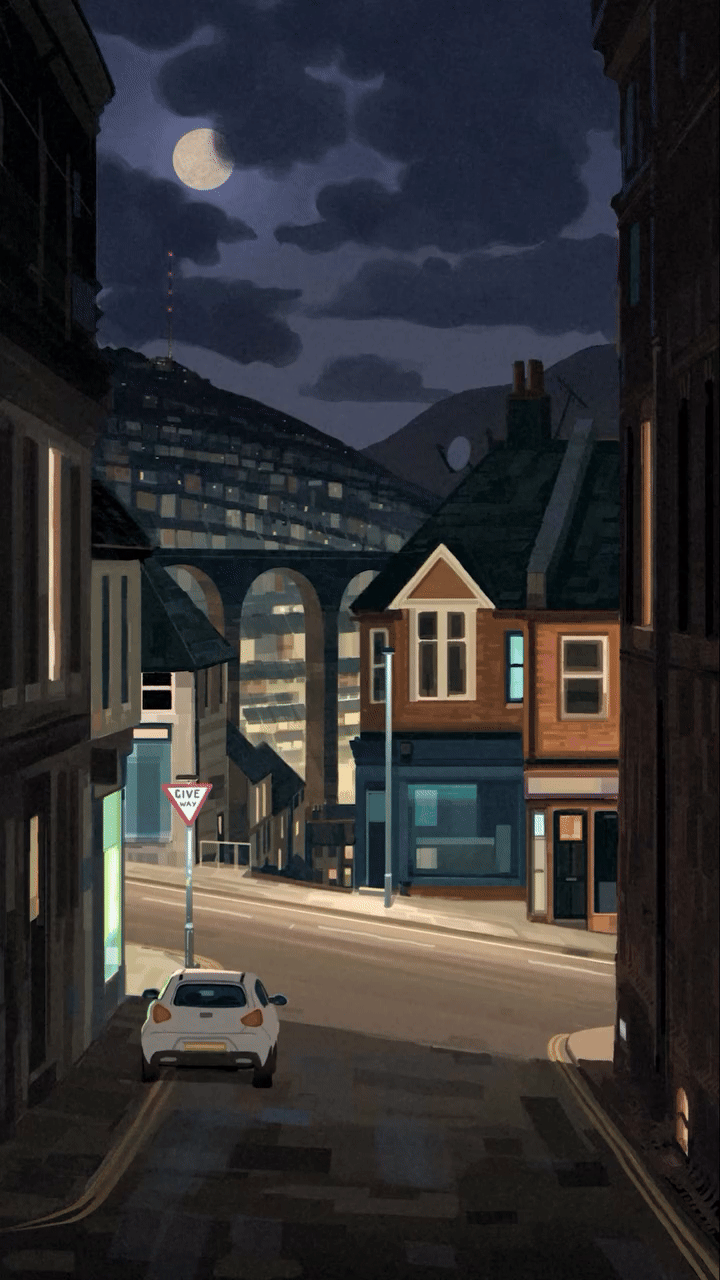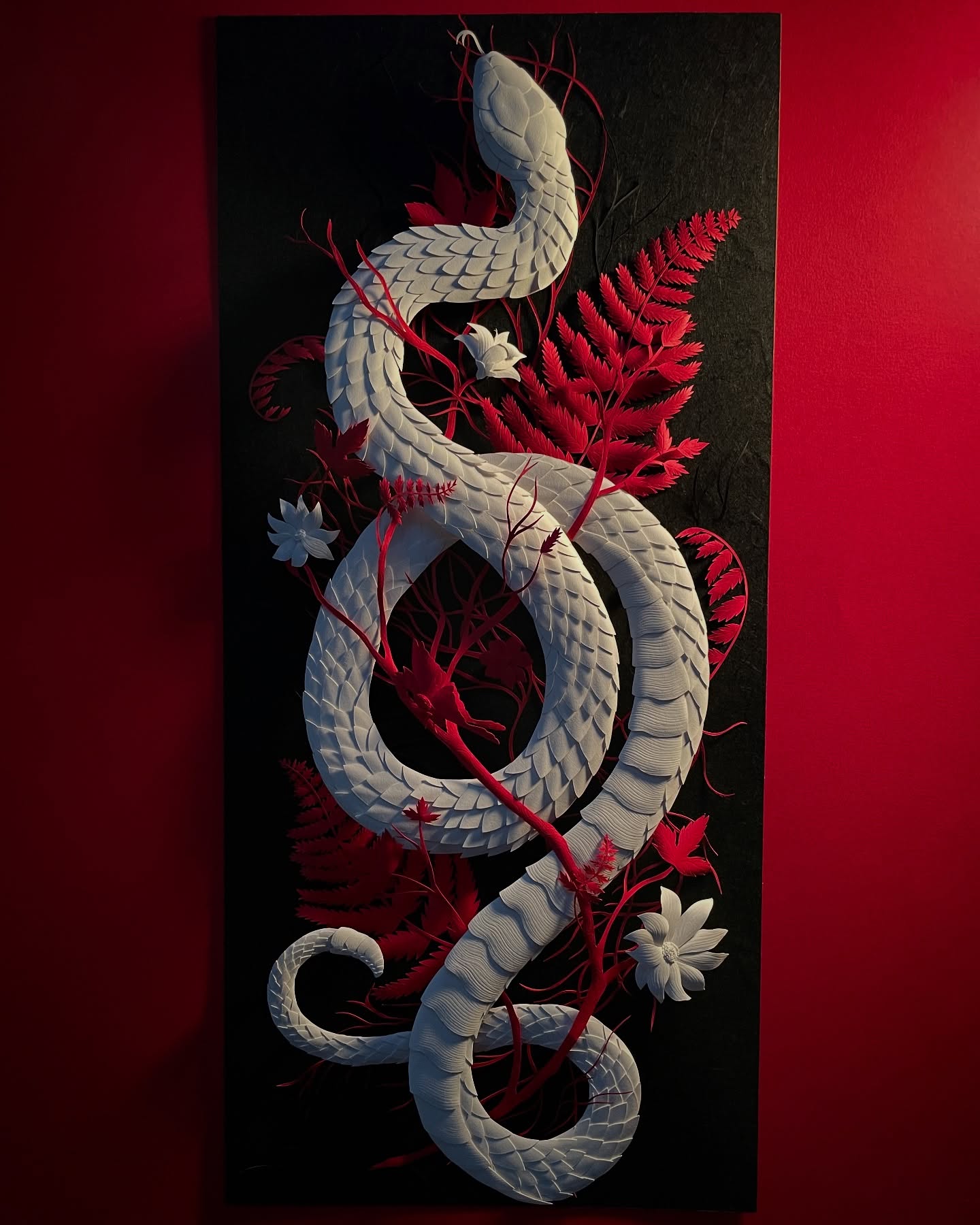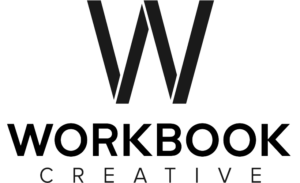We’re talking to award-winning photographer and director Stewart Cohen on this episode of Workbook Radio.
In this four part series, Workbook Regional Representative Mary Preussel talks art and marketing with long-time friend and workbook client, Stewart Cohen. In this first part, the duo discusses how Stewart got into photography and the challenges and triumphs of the work.
MP: “Hi! This is Mary Preussel. I’m one of the marketing representatives at the Workbook. With me today is Stewart Cohen. He’s a director, photographer, owner of SC Pictures, and known as the smartest businessperson in the industry. Okay, Stewart. Let’s see…can you tell me how me met?”
SC: “I can, but I don’t know about the smartest person in the industry. I think I’m the dumbest because I’m still in the industry!”
MP: “Well your longevity is due to many, many things we’ll get into later.”
SC: “So we met a long, long time ago.”
MP: “Yup.”
SC: “When you worked for a competitor.”
MP: “Yup.”
SC: “And you lived in Dallas, and I lived in Dallas. And we’ve known each other ever since.”
MP: “Yup.”
SC: “Through multiple jobs.”
MP: “Jobs and…we raised our kids kind of together? They were in preschool together.”
SC: “Yeah. You’re right. And that child was conceived at a party here [in the studio].”
Mary laughs.
MP: “Okay…so the rumor has it. Not that you had wild parties.”
SC: “No.”
MP: “So what did you want to be when you grew up?”
SC: “A doctor.”
MP: “A doctor?”
SC: “I wanted to be a doctor.”
MP: “Nice.”
SC: “If I couldn’t be a doctor, I was going to be a lawyer.”
MP: “Okay, well. That’s interesting. Also, I do want to mention that you are not an American, are you?”
SC: “I am American. I was born in Canada, and my mother was American, and so I have dual citizenship.”
MP: “Got it. So I know that you went to the University of Texas. And what, did they just not let you into medical school?”
SC: “I went to UT because when we were moving from Canada I met a girl skiing, and I went to visit Austin in February, and there were 20 thousand girls walking around in shorts, and I decided to go to UT Austin.
Mary laughing.
“So anyway I went to UT undergrad in Austin. Started out in pre-med. Quickly got out of that. Ended up with a psychology degree. I was in liberal arts, and I was able to start taking photo classes, and I developed my love for photography then. Kind of my sophomore year of college I decided I wanted to do [photography] for a living.”
MP: “Wow. So you have a psychology degree?”
SC: “I do.”
MP: “For some reason I thought you had a business degree.”
SC: “No. Never.”
MP: “Never. Okay. Well your business acumen comes then just naturally.”
SC: (jokingly) “It’s street.”
MP: (laughing) “Right. So tell me, so why did you pursue motion so early in your career?”
SC: “I always liked motion. I actually went back to USC Film School after I was in business for two years because I really liked the whole live action aspect of it. When I got out, I had just started to gain a little success in the still world, and it was easier at that point, especially in those days. So that was kind of the path of least resistance at that point.
“In those days I could go out and take a good picture and put it in a portfolio, and you really couldn’t do that with motion. I mean you needed a team and party. So I liked the nimbleness of being in the still world early on. And then I signed with my first production company right around the turn of the century…I like that term.”
MP: “Yeah, wow. So what would you say the percentage of film versus stills you do today?”
SC: “I would say 98 percent of every job we do has a motion aspect to it.”
MP: “Some kind of motion…“
SC: “Yeah. Most of them have more motion than stills these days. A lot of them do.”
MP: “Yup. When did that trend start kicking in, do you think?”
SC: “I mean it’s been a long trend. But I think it goes back to the whole digital convergence, the whole DSLR rage. Prior to that, agencies would not look at you to do both the live action and the stills. So normally we were getting either the live action portion of a project or the still portion of the project. For years I was really hammering it and really pushing to try and get the whole package, and trying to tell agencies that it would be cost-saving, it would be more efficient on the shoot days. It wasn’t until, of course, the last 5-6 years that people started to realize that’s actually the case. And I still say there’s still a bunch of miscommunication about it. There are commercials that still guys…everybody now says that they’re a director, and I really feel like agencies are getting burned a lot because of that. Unless you’re really teamed up with the right production crew, you probably shouldn’t be calling yourself a director.”
MP: “That’s a good point. Tell me why you created SC Pictures?”
SC: “I mean SC Pictures is always what it’s been. I called it ‘Stewart Cohen Photography’ at one point? I think we changed it to ‘Pictures’ 7 or 8 years ago because more photography wasn’t really…we weren’t just doing photography, and we were active going after the whole package, so it became more of ‘media’ and ‘pictures’ is more of a common name, you know, if you think about Sony Pictures. So I changed it to SC Pictures.”
MP: “Right, and it was also apparently to indicate as well if you needed to staff up or staff down because you’re offering more production company services?”
SC: “No, I mean back in the old days when it was just ‘Stewart Cohen Photography’ I had 10 people working from here. So our staffing hasn’t really changed. I think you’re alluding to if we have taken on other directors. That we have not. We tried at a couple of junctures. We’ve tried to scale it. In the end, I’ve found that (to date at least) it’s been more effective just to keep me as the main creative and everyone else as support.”
MP: “Right. Got it. So what’s the most challenging part of your job and what’s your favorite part of your job?”
SC: “I really like it all, and I think challenging is just balancing all the balls you have to keep in the air. We’re always working on jobs, trying to get jobs, looking for jobs, and I enjoy every aspect of that.
“I think challenging…although I like creating treatments, I still think it’s challenging because I’m a visual guy and not a writer. If I had anything to go back and redo in school, it would be more writing classes because I feel like that’s a skill that I’m really learning kind of after the fact. So it takes me a long time to write treatments. But I feel like they’re great because it really makes you think about a job.”
MP: “Right, in huge detail.”
SC: “Yeah! I just love being on set. I love a lot of people around. I love the whole circus of it all.”
MP: “Tell me how you know you’ve gotten the shot.”
SC: “Well these days it’s pretty easy because you look on the screen.”
MP: “Right.”
SC: “And, you know, I usually overshoot a lot, and we shoot a lot of variations. You know, it’s like anybody. Somebody says ‘come on, we gotta move on.’ (laughing) That’s how I know I’ve got the shot.”
MP: “Okay what I was trying to pull out of you was ‘the happy surprise.’”
SC: “Yeah, but a lot of times with your little unscripted moments that you capture, those are really the winners, I mean you don’t even know if that’s it until you look at it later.”
MP: “Right.”
SC: “So I feel like I editing…you know a lot of people say, ‘We’re going to edit it the same day as the shoot and get it in.’ You know, I really feel like you need to let it…give it a day before I look at it again. That’s when you usually notice the happy accidents. It’s like, ‘Oh! Look at that over there!’ You know? But I basically, I’ll shoot first then ask questions later. And I think today, of course, with digital media in live action and stills, it makes it really easy. Except it makes our editing process kind of daunting. And our storage at the studio for content is really daunting.”
MP: “Yikes. Like…?”
SC: “Like huge. It’s everyday [the clients] keep coming [back saying], ‘Well, you need to add this, you need to add this.’ Beause you want to back it up! So, anyway, that’s a whole other thing…”
To see Stewart’s Portfolio on Workbook, CLICK HERE.
For all Workbook Radio updates, follow @ workbookradio on Instagram!




